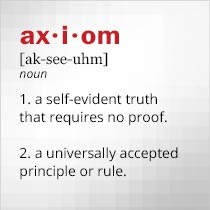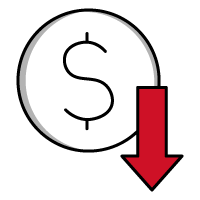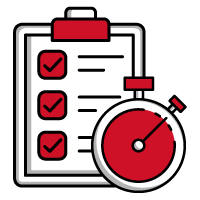Generating RF/Microwave Signals for Test
January 03, 2018
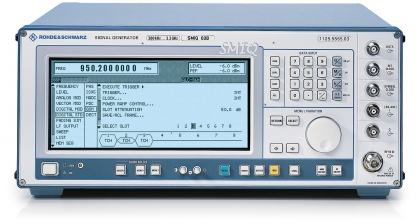 |
Generating RF/Microwave Signals for Test
The last test blog highlighted instruments capable of producing many different test signals, including pulses, square waves, and audio tones. It explored function generators and their value in checking the performance of a variety of circuits, from audio through digital. However, at higher analog frequencies, such as when testing receivers and their components, RF/microwave signal generators provide the optimum sources of test signals for teaming with a suitable signal analyzer, such as a spectrum analyzer. Choosing an RF/microwave signal generator is fairly straightforward and often comes down to how much performance will be needed in the short-term or the long-term, since modern RF/microwave signal generators are available with robust functionality to go with their excellent levels of performance. Selecting the optimum RF/microwave signal generator is more or less a matter of anticipating the long-term requirements of a set of test applications.
Most RF/microwave signal generator selections start with frequency range and how much is needed. Commercial test signal generators are available spanning frequencies from the audio range well into the millimeter-wave frequency range, above 30 GHz. It can be helpful to have some minimum required values in terms of test frequencies and test signal output power when sorting through commercial test signal generators, ideally to find a test signal source capable of producing in excess of the test-port signal level needed, for example, to drive a receiver or its frequency mixer for testing.
But how much frequency range is enough for an RF/microwave signal generator? Even a component fairly common in radio receivers, such as an RF mixer, can have extensive test-signal requirements. A frequency mixer has three ports, and its RF, LO, and IF ports can often operate with three different frequencies over a wide total frequency range.
Ideally, a test signal source offers a frequency range with enough frequency tuning resolution to adjust output frequencies as needed to feed a device under test (DUT) as it would be operating in its actual application. By specifying a signal generator with a frequency range that is beyond that of a DUT of interest, both in-band and out-of-band testing of the device will be possible, with the spectral purity (phase noise), harmonics, and spurious signal quality of a particular signal generator model.
Not All Generators Are Created Equal
Commercial RF/microwave signal generators are typically available in frequency ranges that extend from the kHz or MHz range to several GHz, to the upper limits of the microwave range (about 26.5 GHz), and into the millimeter-wave frequency range (above and beyond 30 GHz). The signals they generate can be differentiated by various performance parameters, including dynamic range and spectral purity. As an example, the Cobham 2026 generator provides an extremely wide power control range of -137 to +24 dBm with 0.1-dB settability across its full frequency range of 10 kHz to 2.4 GHz. This versatile signal generator integrates two independent signal sources in a standard benchtop enclosure, enabling it to control an impressive list of modulation function, including AM, FM, phase modulation, pulse modulation, and frequency-shift-keying (FSK) modulation. The test signal source is ideal for stimulating communications components and systems, and includes GPIB and RS-232 interfaces for connections to automatic-test-equipment (ATE) systems.
For a similar frequency range, the Rohde and Schwarz SMY02 signal generator delivers maximum output power of +13 dBm from 9 kHz to 2.08 GHz (2080 MHz). Output power levels can be adjusted from -140 to +13 dBm with 0.1-dB resolution and ±1.5 dB or better level accuracy. It is specified for outstanding signal spectral purity, with harmonic and spurious levels below -30 dBc for signal power levels to +10 dBm. For test applications where low phase noise is critical, the SMY02 delivers, with SSB phase noise of less than -120 dBc/Hz in a 1-Hz bandwidth offset 20 kHz from a 500-MHz carrier and less than -114 dBc/Hz in a 1-Hz bandwidth offset 20 kHz from a 1-GHz carrier.
The SMY02 uses a fractional-N architecture for fast switching speed (better than 60 ms) and phase-continuous frequency switching. Operators can set the start and stop frequencies as well as step sizes for a frequency sweep, with dwell times at each frequency step adjustable from 10 ms to 5 s. The signal generator also features fast power settling time, less than 25 ms to reach a programmed power level of a new signal frequency. It has an IEEE 488 connection (GPIB) for remote control and ATE setups.
The SMY02 signal generator includes overload projection to 50 W to guard against reflected test signals or signals from a high-power DUT, such as a power amplifier, backing into the signal generator. A number of internal control loops help maintain high output-power accuracy over time and temperature, resulting in a long, three-year calibration cycle.
For a similar frequency range, the Keysight / Agilent 8648C signal generator covers 9 kHz to 3.2 GHz with tuning resolution as fine as 0.001 Hz. It has frequency switching speed of better than 100 ms for ATE use, with GPIB (IEEE 488) remote control interface. For output signal levels to +10 dBm, the 8648C has spurious and harmonic levels that are typically better than -30 dBc. Its SSB phase noise is less than -120 dBc/Hz in a 1-Hz bandwidth offset 20 kHz from a 500-MHz carrier and less than -116 dBc/Hz in a 1-Hz bandwidth offset 20 kHz from a 1-GHz carrier. The 8648C signal generator is available with standard AM and FM as well as several optional internal waveform and pulse modulation sources.
Many signal generators are capable of producing fixed- or swept-frequency output signals with or without various forms of AM, FM, phase, and pulse generator. For DUTs that require testing with digitally modulated signals consisting of in-phase (I) and quadrature (Q) signal components, however, a vector signal generator (VSG) such as the Rohde and Schwarz SMIQ06B includes an internal I/Q modulator (with 30-MHz 3-dB modulation bandwidth) to produce the signals with digital modulation as required for testing many modern communications systems and their components. The SMIQ06B covers 300 kHz to 6.4 GHz and, with its I/Q modulation capability, can replicate a wide range of digital modulation formats, such as amplitude shift keying (ASK) and 256-state quadrature amplitude modulation (256QAM) as well as many standard analog modulation formats, such as AM, FM, phase, and pulse modulation.
In addition to its digital modulation capabilities, the SMIQ06B is a high-performance analog digital generator, capable of signal output levels to +13 dBm with ±0.5 dB level accuracy and fast frequency setting time of typically 3 ms, spurious rejection of -70 dBc, and low phase noise. The VSG is available with many options, including a multipath fading simulator, noise generator, and distortion simulator. It can also be equipped with built-in bit-error-rate (BER) measurement capability.
When higher-frequency test signals are needed, the Keysight Technologies 83630B is a sweep generator with frequency range of 10 MHz to 26.5 GHz and as much as +10 dBm output power at the highest frequencies. Standard frequency tuning resolution is 1 kHz, with an option for 1 Hz. Standard models are available with analog modulation, such as AM and FM, and numerous options are available for additional modulation formats. Spurious levels are held to -30 dBc. The RF/microwave signal generator includes a GPIB port for programmable remote control and ATE applications.
With the growing use of even higher signal frequencies through the millimeter-wave frequency range, for such applications as advanced driver assistance system (ADAS) automotive radars and Fifth Generation (5G) wireless communications networks, the Keysight / Agilent 83650B synthesized sweep generator provides output signals from 10 MHz to 50 GHz with standard tuning resolution of 1 kHz and an option for tuning resolution of 1 Hz. One of the main concessions for any test signal source at these higher, millimeter-wave frequencies is output power, and the 83650B provides as much as +3 dBm output power through about 40 GHz and about 0 dBm output power through 50 GHz.
These specifications provide a brief first look at these signal generators, with much more to be known about any one model before making a decision on the best test signal source for a particular test laboratory or production line.
As noted with these models, RF/microwave signal generators from all suppliers are available with a wide range of options and the cost of any additional options should be weighed versus any requirements for additional performance and/or functionality. In general, any quest for a signal generator should probably start with frequency range and modulation formats and then compare noise characteristics and other parameters. The examples presented above are designed and built for reliability and typically feature three-year calibration cycles for long service times.
For more information on the equipment mentioned here or on Axiom’s inventory of signal generators including downloadable data sheets are all available from the Axiom Test Equipment website at www.axiomtest.com or by contacting Axiom Test Equipment’s sales department at sales@axiomtest.com or by calling 760-806-6600.
Back to BLOG


